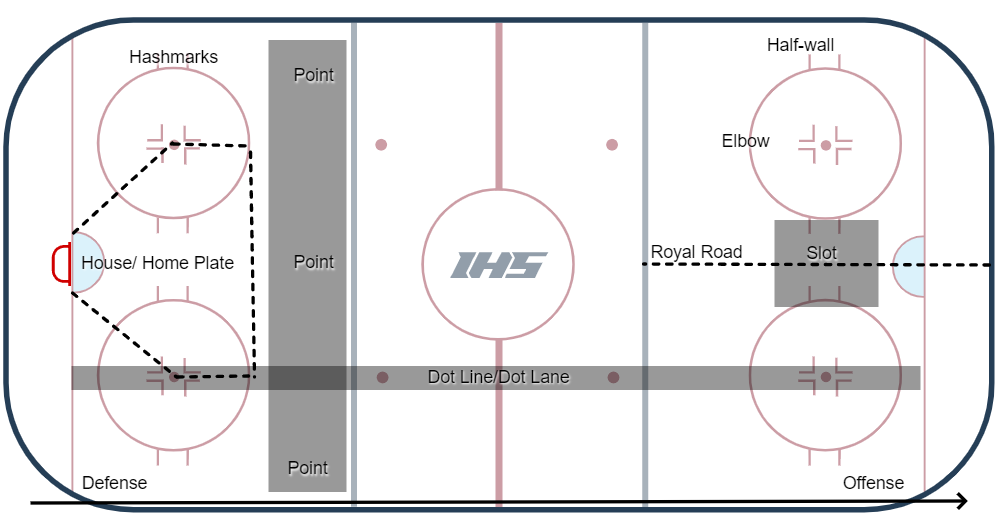Transitions in any sport are of vital importance. Most coaches track transitional play due to their critical influence on winning and losing games. While limiting these transitional opportunities is key, but it’s virtually impossible to avoid them. Being able to play them well is a great skill to acquire and a skill that translates to all levels of hockey.
The first element to playing transition/rushes is the concept of leverage, inside & outside.
This is most commonly associated with American football. Where the cornerbacks and linebackers are using leverage to encourage the offensive player into the areas of the field they want them to be. They do this by slightly overplaying one area.
Leverage
Outside Leverage = Positioning yourself as a defender on the outside.
This naturally encourages the offensive player toward the inside of the field. Often with the goal of pushing the player towards the help of a teammate.
Inside Leverage = Positioning yourself as a defender on the inside.
This naturally encourages the offensive player toward the outside of the field. Often with the goal of pushing the player towards the sideline where they have less space to operate.
Working the dots
Playing the rush is a key situation for any defenseman to handle. Many coaches teach working the dots as a basic concept to start.

Here are examples of why this is a great starting point for defenders to learn:

Utilizing Rush Leverage
When a defenseman fails to establish leverage, they allow the offensive player to dictate what is going to happen next. This puts the defender in a reactive state. “Squaring up” rather than establishing proper leverage is a poor tactic for forcing or influencing play where you want it to go.
Dahlin overplays and gives away inside leverage
While we have been talking about how to use leverage when skating backward and defending the rush, it’s also a great concept to understand when choosing how to pivot when closing space.
Trouba (#8 white) incorrectly pivots while his defensive partner is in an outside leverage situation. This gives space for McDavid to skate between himself and his defensive partner. It’s McDavid, so the result may have been the same… yet this is still a great example for defensemen to learn from.
Key plans
The next time you’re playing the rush, remember three key concepts learned here
Working the dots
Pivoting into an inside leverage position
Choosing your leverage deliberately
Further reading
Did you enjoy this newsletter?
Help us spread the ideas within and share it with the people you care about





